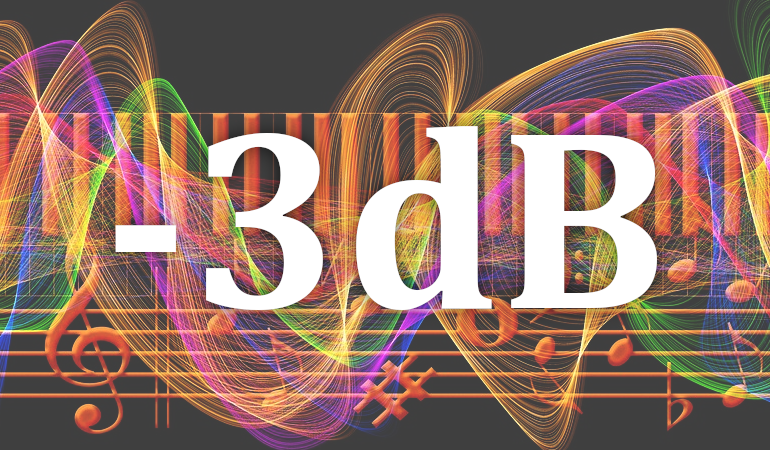What is the -3dB Point of a Speaker and Why is it Important?
The hardest part of picking up a new hobby is figuring out all the shorthand. There are so many abbreviations, shortened names, and terms that are just unfamiliar to the outsider. This can lead to people feeling excluded and stressed. There are oodles of sociological studies on this behavior. But we are not here to exclude, we’re here to educate. One common metric that is casually thrown around in forums is the -3dB point of a speaker. What is a speaker’s -3dB point and why is it important? Let’s discuss.
Author’s Note: One common abbreviation that is used in audio is dB. dB stands for decibel. It is a measure of volume. For our purposes, a positive number indicates a higher or louder volume, a lower number indicates a lower or quieter volume.
Speaker Frequency Response
Most speakers will have listed specifications (or “specs”). We’ve talked about power handling, impedance, and sensitivity already. Every speaker of reasonable quality will also list some sort of frequency response. Generally, it will consist of a couple of numbers. It might look like:
60Hz – 22kHz +/-3dB
or maybe even:
+/-6dB from 60Hz – 22kHz
Most speakers that we would consider “good” aim for a flat frequency response. The numbers above indicate that the manufacturer agrees. They are saying that their speakers will reproduce every note between 60Hz and 22kHz with no more than a variation of 3dB (top) or 6dB (bottom). The more common metric is the top one. This shows a 6dB swing (3dB above the average and 3dB below) across the specified range. But when people talk about a speaker, they rarely talk about the +3dB point, and focus on the -3dB. Why?

It’s All About Crossovers
We want to know how low a speaker plays so that we can make a determination on how well they will cross over into a subwoofer. Your subwoofer handles the lowest bass. The general advice is that your speakers need to play cleanly down to at least 80Hz. Why? Because that is the point where you’d want your subwoofers to take over.
At the lowest frequencies, we expect your speakers to start to get quieter. So the lowest frequencies (60Hz in the example above) will be around 3dB quieter than the average performance of your speaker. So, when someone asks about the -3dB point of a speaker, they are generally referring to the lowest frequencies it can play. They are looking for a number lower than 80Hz. At least for the front three speakers (left, right, and center).
What’s so Magical about 80Hz?
The consensus in the AV community is that sounds below 80Hz are not localizable. THX agrees. A localizable sound is one where you can easily pick out the direction from which it originated. That’s because bass waves that low are omnidirectional because of their length. A speaker that can’t play lower than 80Hz, can’t be adequately crossed over into a subwoofer. While this is less important for surround and Atmos speakers, it is generally expected that your front speakers will at least hit this metric.
Some will also take a significantly lowered -3dB point as a sign of a speaker’s quality. If the speaker plays low enough, they’ll say that it won’t need a subwoofer. They are wrong, but it is what some people think. Since we always recommend integrating a subwoofer into your home theater or stereo system, paying extra for extension you won’t use is, considered by us, a waste of money.
Wrap Up
While the frequency response of a speaker will fluctuate across the rated range, you can expect the -3dB point to be at the lowest end. Therefore, when someone talks about the -3dB point of a speaker, they are asking how low it will play. This is done both to indicate quality and to demonstrate how well it will integrate with a subwoofer.


